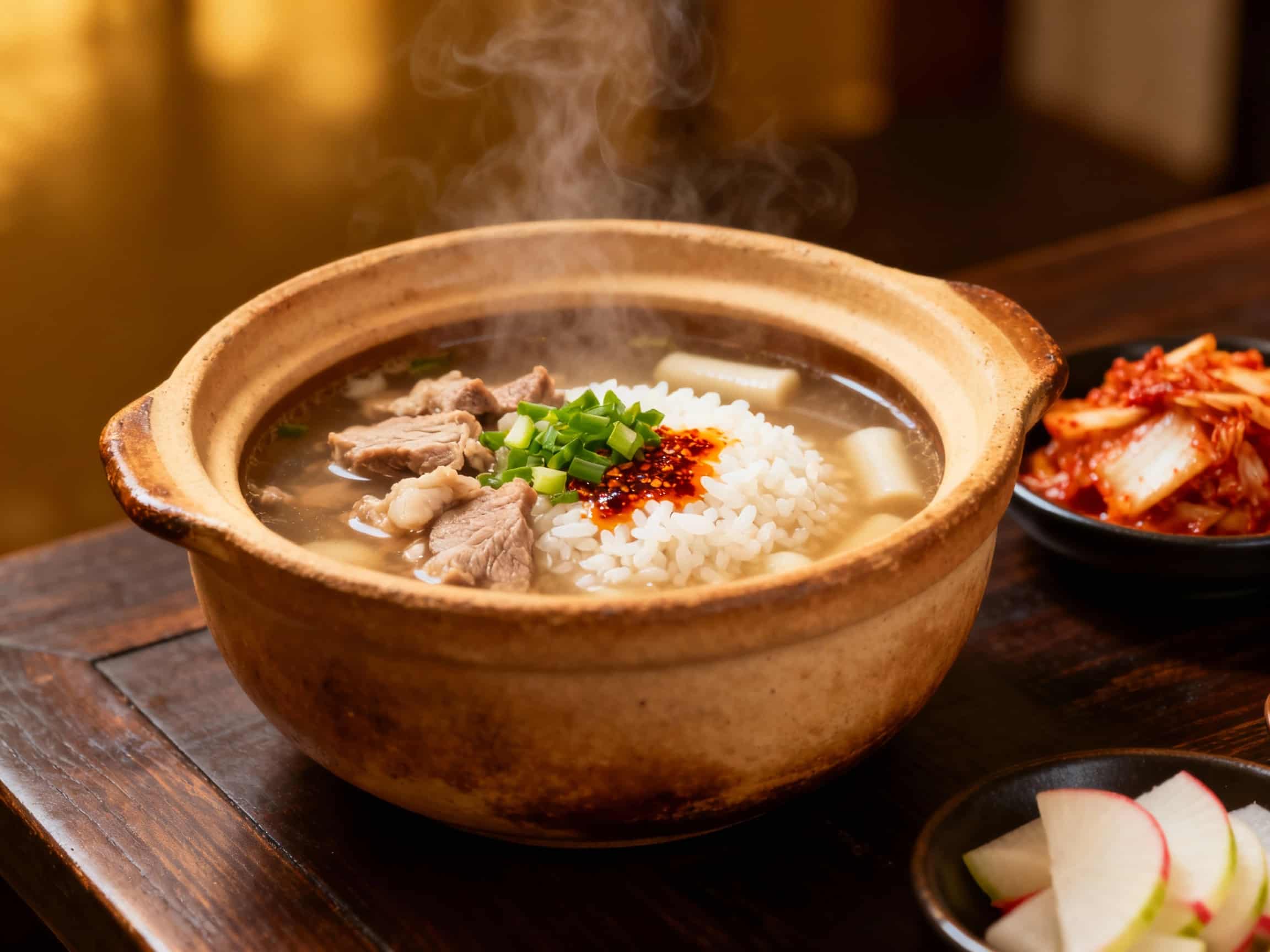
Gukbap
국밥
- Country
- Korea
- Region
- Not specified
- Recipes
- 0 Recipes
Dish information
Gukbap, a foundational element of Korean cuisine, literally translates to "soup with rice" (guk meaning soup, bap meaning rice). This seemingly simple name encompasses a vast and diverse category of dishes, each deeply rooted in regional culinary traditions and historical practices. The concept of Gukbap dates back centuries, emerging as a practical and nourishing meal for common people, often prepared with readily available ingredients. Its appeal lies in its heartiness, affordability, and the comforting combination of warm broth and rice, which provides both sustenance and hydration. Historically, Gukbaps were often street food or served in bustling markets, providing quick and satisfying meals for laborers and travelers. Variations are numerous and often named after their main ingredient or region, such as Sundaegukbap (blood sausage soup with rice), Dwaeji Gukbap (pork soup with rice, popular in Busan), and Kongnamul Gukbap (bean sprout soup with rice, a Jeonju specialty). Each variant carries its own history and cultural significance, evolving over generations. Gukbap embodies the Korean culinary philosophy of maximizing flavor from simple ingredients and ensuring a balanced, fulfilling meal. It remains a beloved comfort food, enjoyed at any time of day, particularly cherished for its ability to warm and revive the body.
Timeline
Early forms of dishes combining soup and rice, proto-Gukbap, are believed to have existed among commoners for practical sustenance.
The term 'Gukbap' likely emerged as a generic description for soup-and-rice dishes becoming more formalized in culinary texts.
Regional variations of Gukbap, like Dwaeji Gukbap in Busan, develop strong local identities and specialized eateries.
During and after the Korean War, Gukbap becomes a staple for its affordability and nourishment, especially from street vendors.
Modern Gukbap restaurants flourish, offering refined versions of traditional Gukbap dishes across Korea.
Related recipes
0 recipesWe'll add related recipes for this dish soon.